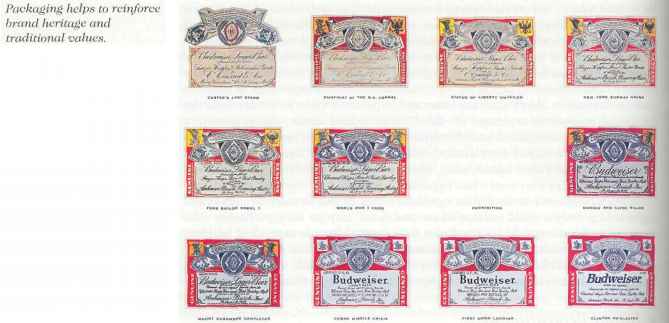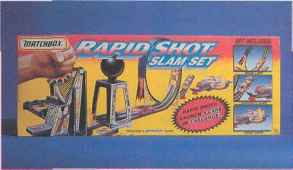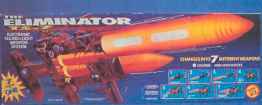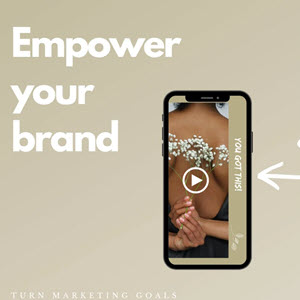Brand Strategy
A company must define its overall branding strategy, which affects all of its products. This strategy will also guide the branding of new products. A company has four choices when it comes to brand strategy (see Figure 1,3.4). It can introduce line extensions (existing brand names extended to new forms, sizes and flavours of an existing product category), brand extensions (existing brand names extended to new product categories), multibrands (new brand names introduces in the same product category) or new brands (new brand names in new product categories.
LINE EXTENSIONS. Line extensions occur when a company introduces additional items in a given product category under the same brand name, such as new flavours, forms, colours, ingredients or package sizes.
The vast majority of new-product activity consists of line extensions. A company might introduce line extensions for any of several reasons. It might want to meet consumers' desires for variety, or it might recognize a latent consumer want and try to capitalize on it. Excess manufacturing capacity might drive the company to introduce additional items, or the company might want to match a

- Figure 13.4
Four brand strategies competitor's successful line extension. Some companies introduce line extensions simply to command more shelf space from resellers.
Line extensions involve some risks, however. The brand name might lose its specific meaning - some marketing strategies call this the 'line-extension trap'.17 In the past, when consumers asked for a Coke, they received a 6-ounce bottle of the classic beverage. Today the vendor has to ask; New, Classic, or Cherry Coke? Regular or diet? Caffeine or caffeine free? Bottle or can? Another risk is that many line extensions will not sell enough to cover their development and promotion costs. Or even when they sell enough, the sales may come at the expense of other items in the line. A line extension works best when it takes saies away from competing brands, not when it 'cannibalizes' the company's other items.1"
BRAND EXTENSIONS. A brand-extension (or brand-stretching) strategy is any effort to use a successful brand name to launch new or modified products in a new category. Procter & Gamble put its Fairy name on laundry powder and dishwashing detergent with effective results. Swatch spread from watches into telephones. And Honda stretched its company name to cover such different products as its cars, motorcycles, snowblowers, lawn mowers, marine engines and snowmobiles. This allows Honda to advertise that it can fit 'six Hondas in a two-car garage'.
A brand-extension strategy offers many advantages. First, brand extensions capture greater market share and realize greater advertising efficiency than individual brands.19 Second, a well-regarded brand name helps the company enter new product categories more easily as it gives a new product instant recognition and faster acceptance. Sony puts its name on most of its new electronic products, creating an instant perception of high quality for each new product. Thus, brand extensions also save the high advertising cost usually required to familiarize consumers with a new brand name.
At the same time, a brand-extension strategy involves some risk. Poorly conceived brand extensions such as Bie pantyhose, Heinz pet food and Cadbury soup met early deaths. In each of these cases the brand name was not appropriate to the new product, even though it was well made and satisfying. This problem occurs when the established brand name is launched into a very different market from the original brand and target customers in the new market do not value the brand's associations. Imagine a Pepsi single malt whiskey or Chanel galoshes?
In 1979 Levi Strauss introduced a line of men's trousers and blazers, which were marketed as 'classically tailored clothes from Levi'. A contradiction in terms? The men who bought classically tailored clothes thought so too. The range sank without trace. Levi management learnt that the 'Levi' name, although having brioiil extension Using u successful brand name to launch a n&us or modified produce in a new category.
an outstanding reputation in denim jeans and casual wear, was not as 'elastic' as they thought it to he.-"
A brand name may also lose its special positioning in the consumer's mind through overuse. Brand dilution occurs when consumers no longer associate a brand with a specific product or even highly similar products. Business observers, for example, have questioned the 'elasticity' of the Virgin name. Richard Branson has extended the Virgin name, which appears on a htige range of disparate products, ranging from music and entertainment media shops, airlines and Internet services to personal financial services, cola drinks and bridal wear. They wonder if Virgin may run the risk of overusing the brand's power of quality, innovation, value for money and fun, and its emotional 'take on the big bullies and give you something better' associations.
Finally, brand extensions can hurt the core values of the original product when managers get it wrong. The American Milwaukee Miller Brewing Company stuck the Miller name, synonymous with a hefty 'good-ol'-boys' brew, on its new 'Lite' beer. Miller Lite became a highly successful beer, but by muddying the sharp associations of the Miller name, the company hurt Miller High Life, the original beer, whose sales subsequently plummeted. Miller's original beer was advertised to older drinkers on the basis of traditional American values, while Miller Lite targeted the under-24s using tongue-in-cheek endorsements from sportsmen and comics.
Transferring an existing brand name to a new customer segment or product group requires great care. The best result is one when the extension enhanees the core brand and builds the sales of both current and new products. Companies that are tempted to transfer a brand name must research whether the brand's associations fit the new product.21
niultibraiid strategy A strategy under a seller develops tivv or mure brands in the .same product category.
range branding strategy A brand strategy whereby the firm develops separate product range names far different families of product.
corporate brand strategy A brand strategy whereby thefirm makes its company name the dominant brand identity across alt of its products.
company and individual brand strategy A branding approach thatfocuses on the company name and individual braiui name.
MULTIBHANDS, Companies such as Lever Brothers, Mars and Procter & Gamble create individual brand identities for each of their products. Lever's line of laundry detergents - Persil, Wisk, Surf, Radion, etc. - have distinct labels, with the corporate name hardly featured. Similarly, Procter & Gamble produces at least nine brands of laundry products. These manufacturers argue that a multibrand strategy - managing a stable of brand names within the same product category - permits finer segmentation of the market, with each brand name suggesting different functions or benefits for different customer segments. Another advantage is that the firm can differentiate its new products more effectively with individual brand names, while also reducing the risk of individual brand failures harming the company's overall reputation.
Some companies develop multiple brands, not for individual products, but for different families of products. For example, the Japanese electronics group Matsushita has opted to use range branding and developed separate range names for its audio product families - Technics, National, Panasonic and Quasar.
The multibranding approach contrasts with the corporate branding strategy. In corporate branding, the firm makes its company name the dominant brand identity across all of its products, as in the case of Mercedes-Benz, Philips and [leinz. The main advantages are economies of scale in marketing investments and wider recognition of the brand name. It also facilitates introduction of new products, especially when the corporate name is well established.
Other companies have used a company and individual branding approach to naming their products. This approach focuses both on the corporate and individual brand names. Kcllogg's (e.g. Cornflakes, Raisin Bran, Rice Krispies, Coco I Pops, etc.) and Cadbury's (e.g Wispa, Flake, Roses, Fruit and Nut, Milk Tray, Wholenut, Dairy Milk) are supporters of this branding strategy.
NEW BRANDS. Firms that favour a milltibrand approach are likely to create a new brand to differentiate a new product, whether it is introduced into an existing or a new-product category. However, for some companies, a new brand may be created because it is entering a new-product category for which none of the company's current brands seems appropriate. For example, Toyota established a separate family name - the Lexus - for its new luxury executive cars in order to create a distinctive identity for the latter and to position these well away from the traditional mass-market image of the 'Toyota' brand name. Alternatively, a company may be compelled to differentiate its new product, and a new brand is the best route to signal its identity. Seiko introduced a line of lower-priced watches under the Pulsar brand name, which is used as aflanker orfighter brand aimed at customers who want a less expensive watch.
Introducing new brands within a product category can be risky as each brand might obtain only a small market share and none may be very profitable. The company will have spread its resources over several brands instead of building one or a few brands to a highly profitable level. Companies should weed out weaker brands and set high standards for choosing new brands. Ideally, the firm's brands should take sales away from competitors' brands, not from each other.
• Brand Repositioning
However well a brand is initially positioned in a market, the company may have to reposition it later, A competitor may launch a brand position next to the company's brand and cut into its market share. Or customer wants may shift, leaving the company's brand with less demand. Marketers should consider repositioning existing brands before introducing new ones. In this way, they can build on existing brand recognition and consumer loyalty.
Repositioning may require changing both the product and its image. For example, Kentucky Fried Chieken changed its menu, adding lower-fat skinless chicken, and non-fried items such as broiled chicken and chicken salad sandwiches to reposition itself towards more health-conscious fast-food consumers. It also changed its name - to KFC. A brand can also be repositioned by changing only the product's image. Johnson & Johnson's baby shampoo was repositioned without a physical change from a 'baby shampoo' to a 'mild shampoo' for adults who wash their hair frequently and want a gentle alternative. Similarly, Buhner, die United Kingdom's leading cider maker, successfully repositioned its mainstream brands, Strongbow and Woodpecker, by giving them a more contemporary lifestyle image, a marked contrast to cider's traditional rustic image. Buhner spent around £10 million in a series of new advertising appeals to change consumer perceptions ofthese two brands.
Having looked at branding positions, we now turn to another important product decision - packaging.
Packaging Decisions
Many products offered to the market have to be packaged. Some marketers have called packaging a fifth I, along with price, product, place and promotion. Most marketers, however, treat packaging as an element of product strategy.
Packaging includes the activities of designing and producing the container or wrapper for a product. Packaging performs a vital function for most products. It protects goods from being damaged before you buy them, helps keep, for example, foodstuffs hygienic and fresh, and is often necessary for labelling and information reasons.
packaging The activities of designing and producing the container or wrapper for a product

Although the primary function of the package was to contain and protect the product, in recent times, many factors have made packaging an important marketing tool. An increase in self-service means that packages must now perform many sales tasks - from attracting attention, to describing the product, to making the sale. Companies are realizing the power of good packaging to ereate instant consumer recognition of the company or brand. For example, in an average supermarket, which stocks 15,000 to 17,000 items, the typical shopper passes by some 300 items per minute, and 53 per cent of all purchases are made on impulse, hi this highly competitive environment, the package may be the seller's last chance to influence buyers. Research shows that a sizeable chunk of buyers can be swayed at the last minute from buying their cat's favourite tin of tuna bites if their eye is caught by a well-designed, competitive brand, Manufacturers must use pack design - shape, graphics and texture - to project their brand values and differentiate them in an overcrowded market.
Innovative packaging can give a company an advantage over competitors, Perrier and Grolsch used creative packaging to differentiate the product and have enjoyed good market results, Coca-Cola and Jack Daniels whisky bottles are so distinctive and have such strong identity with their brands that the packaging d each product not only says it all, but also has become a classic. Equally, the first companies to put their fruit drinks in airtight foil, paper cartons (aseptic packages) and tamper-proof' packaging, and their toothpastes in pump dispensers, also attracted many new customers.
To counter own-label imitators, brand manufacturers use innovative packaging to differentiate and protect their brands. For example, Nestle relaunched its market-leading peanut butter brand Sun-Pat with a new peanut-shaped jar and Hip-top lid to counteract own-label products. The company also obtained new trademark and design registrations which offered protection for its new packaging.
Developing a good package for a new product requires making many decisions. The first task is to establish the packaging concept. The packaging concepl states what the package should be or do for the product. Should the main functions of the package be to offer product protection, introduce a new dispensing method, communicate certain qualities about the product, the brand or the company, or something eise? Decisions, then, must be made on package design that cover specific elements of the package, such as size, shape, materials, colour, text and brand mark. These various elements must work together to support the product's position and marketing strategy. The package must he consistent with the product's advertising, pricing and distribution.
After selecting and introducing the package, the company should check it regularly in the face of changing consumer preferences and advances in technology. In the past, a package design might last for 15 years before it needed changes. However, in today's rapidly changing environment, most companies must recheck their packaging every two or three years.22
Keeping a package up to date usually requires only minor but regular changes -changes so subtle that they may go unnoticed by most consumers. But some packaging changes involve complex decisions, drastic action and high cost. Whether the changes are minor or major, marketers must weigh the costs of change against the risks, on the one hand, and, on the other, the impact on consumer perceptions of the value added by the new packaging and the extent of fulfilling marketing objectives. For example, in 1996 Pepsi spent $500 million on revamping the Pepsi packaging - it changed the colour from red to blue - but survey results revealed that this had done little to arouse attention or dent rival Coca-Cola's supremacy. Only half of all fizzy-drink buyers had noticed the change and only 18 per cent who had noticed the change thought that it made the packaging more attractive.33 In making packaging decisions, the company also must heed growing environmental concerns about packaging and make decisions that serve society's interests as well as immediate customer and company objectives. However, determining just what serves the best interests of consumers and society can sometimes be tricky (see Marketing Highlight 13.4).
Labelling Decisions
Labels may range from simple tags attached to products to tsomplex graphics that are part of the package. They perform several functions. At the very least, the label identifies the product or brand, such as the name 'Sunkist' stamped on oranges. The label might alsograde the product, or describe several things about the product - who made it, where it was made, when it was made, its contents, how it is to be used and how to use it safely. Finally, the label might promote the product through attractive graphics.
There has been a long history of legal concerns about labels. Labels can mislead customers, fail to describe important ingredients or fail to include needed safety warnings. As a result, many countries have laws to regulate labelling. Sellers must ensure that their labels contain all the required information and comply with national or international (e.g. USA, EU) requirements.
Pro duct-Support Services Decisions
Customer service is another element of product strategy, A company's offer to the marketplace usually includes some services, which can be a minor or a major part of the total offer. In fact, the offer can range from a pure good on the one hand to a pure service on the other. In Chapter 15, we will discuss services as products in themselves. Here, we address product-support services - services that augment product-support services Services that augment actual products.
586 Chapter 13 Brands, Products, Packaging
Designing effective packaging for toys is getting increasingly difficult as this is an area that manufacturers claim is strewn with cliches and restrictions. Why is this so?
Take a typical toy shop. In it, often hundreds to thousands (in the case of Toys 'R' Us) of items are stacked from floor to ceiling and all rely upon eye-catching packaging to attract little consumers', and their parents', attention. Being noticed among all this is akin to trying to whistle a jingle while a Nirvana record plays.
hi the battle to gain attention, toy manufacturers have literally to 'turn up the visual volume' to the extent that packaging in the norm becomes violently loud. This loud visual display is exemplified by banks of pink, pale blue and frills (reminiscent of an evening with Dame Edna) with Barbie, Sindy, My Little Pony and their 'me-toos' and accessories reaching out to small girls. These are counter-matched by the fluorescent yellows, oranges, blacks and blues of ever larger, uglier and more deadly looking" toy weapons, vehicles. Crash Dummies and Biker Mice from Mars - al! seeking to attract the boys. Political correctness has no place here! Toy packaging aimed at children aged five years and older is apparently violently garish (and unashamedly sexist).
Interestingly, only in the pre-school and more educational categories docs some tranquillity (in terms of colours) reign, maybe because these are targeted at parents who are doing the choosing.
The old-timer Matchbox is abandoning its old, dated blue-grid packs and introducing the 'obligatory' flu ores cents. Bright orange and yellow are found across its full product mix of 340 different lines. Matchbox has had to jettison its familiar old blue look and move in pace with everything else on the shelves.
Packaging design, however, seems to look different and dull when it comes to educational toys for 8-year-olds and older children. Here manufacturers avoid sledgehammer colours and brash presentation on packaging because these toys are generally aimed at both sexes.
Manufacturers seem to face a general problem in finding a balance between worthiness and aspiration. For example, the 'Fun With ...' range is, by most parents' standards, a worthy toy because of the educational benefits offered to kids. But it comes in exceptionally dull packaging that seems to contradict the aspirational value of the toy {the pack features two children using the product, but even they do not seem to be having mueh fun).
Manufacturers can get it right sometimes. Hornby's The Eliminator (a big-gun toy) and Dnplo's range are presented in packaging that effectively communicates the benefits of their individual products.
Hornby's packaging for The Eliminator, sporting sci-fi style with lots of exaggerated perspec-
Eyeful Power: Packaging Tovs is not Kids' Stuff
Marketing
Highlight
13.4


Tby packaging: loud and violent colours ruign when it comes to packaging toys for boys.

Tby packaging: loud and violent colours ruign when it comes to packaging toys for boys.
live, is dramatic and exciting. It clearly conveys the toy's fantasy value. The box size - almost as big as the child - is also important. The colours are loud, but still manage to stand out from the general clutter of colour on-shelf. Uses and benefits are also clearly explained on die front of thy box, just as an adult would expect these to be displayed on a drill's packaging.
Duplo's packaging has been designed to appeal to under-5s, although parents are the main buyers for this age group. Duplo has strong brand Identification, which helps, given that this is a Very important element for mums and dads. The packaging's visual character is supposed to amplify the product inside. The happy, smiling child showing oft' the end result of play reinforces the worthiness of the toy (and fulfils mum's and dad's aspirations for the child!). The pack's exciting physical presence also has an edge - you can tell it is Duplo from a mile off.
Packaging design for toys is not just getting 'eyeful power'. Manufacturers say that it is easy to get it wrong, difficult to strike a balance between aspirations and worthiness, and difficult to be really innovative. Manufacturers must, nonetheless, pay attention to target consumers (who uses the toy, who does the choosing, etc.) and design appropriate packaging that will effectively do the job of attracting and communicating with its target audience. Only then, will it stand out from the crowd - on-shelf and in sales!
SOURCE: Rod Springett, 'Eyeful power. Marketing Week (29 April 1994), pp. 48-9, actual products. More and more companies are using product-support services as a vital tool in gaining competitive advantage.
Good customer service makes sound business sense. It costs less to keep the goodwill of existing customers than it docs to attract new customers or woo back lost customers. Firms that provide high-quality service usually outperform their less service-oriented competitors. A study comparing the performance of businesses that had high and low customer ratings of service quality found that the high-service businesses managed to charge more, grow faster and make more profits.24 Clearly, marketers need to think about their service strategies.
• Deciding on the Service Mix
A company should design Us product and support services to meet the needs of target customers. Customers vary in the value they assign to different services. Some consumers want credit and financing services, fast and reliable delivery, or quick installation. Others put more weight on technical information and advice, [raining in product use, or after-sale service and repair. Thus the first step in deciding which product-support services to offer is to determine both the services that target consumer value and the relative importance of these services.
Determining customers' service needs involves more than simply monitoring complaints that come in over freephone lines or on comment cards. The company should periodically survey its customers to get ratings of current services as well as ideas for new ones.
Products can often be designed to reduce the amount of servicing required. Thus companies need to co-ordinate their product-design and service-mix decisions. For example, the Canon home copier uses a disposable toner cartridge that greatly reduces the need for service calls. Kodak and 3M design products that can be 'plugged in' to a central diagnostic facility that performs tests, locates troubles and fixes equipment over telephone lines. A key to successful service strategy, therefore, is to design products that rarely break down and are easily fixable with little service expense.
Continue reading here: Product Line Length Decisions
Was this article helpful?
Readers' Questions
-
fulvia1 year ago
- Reply

